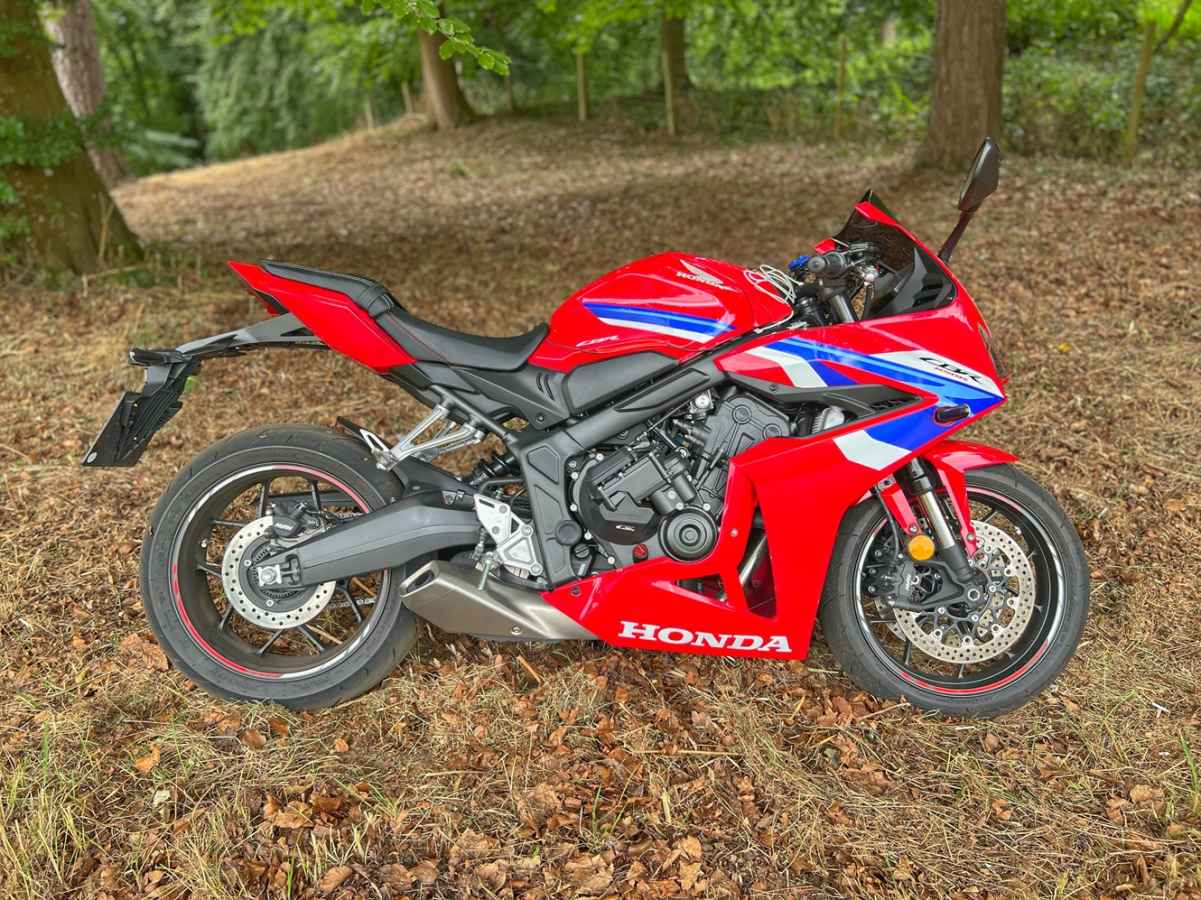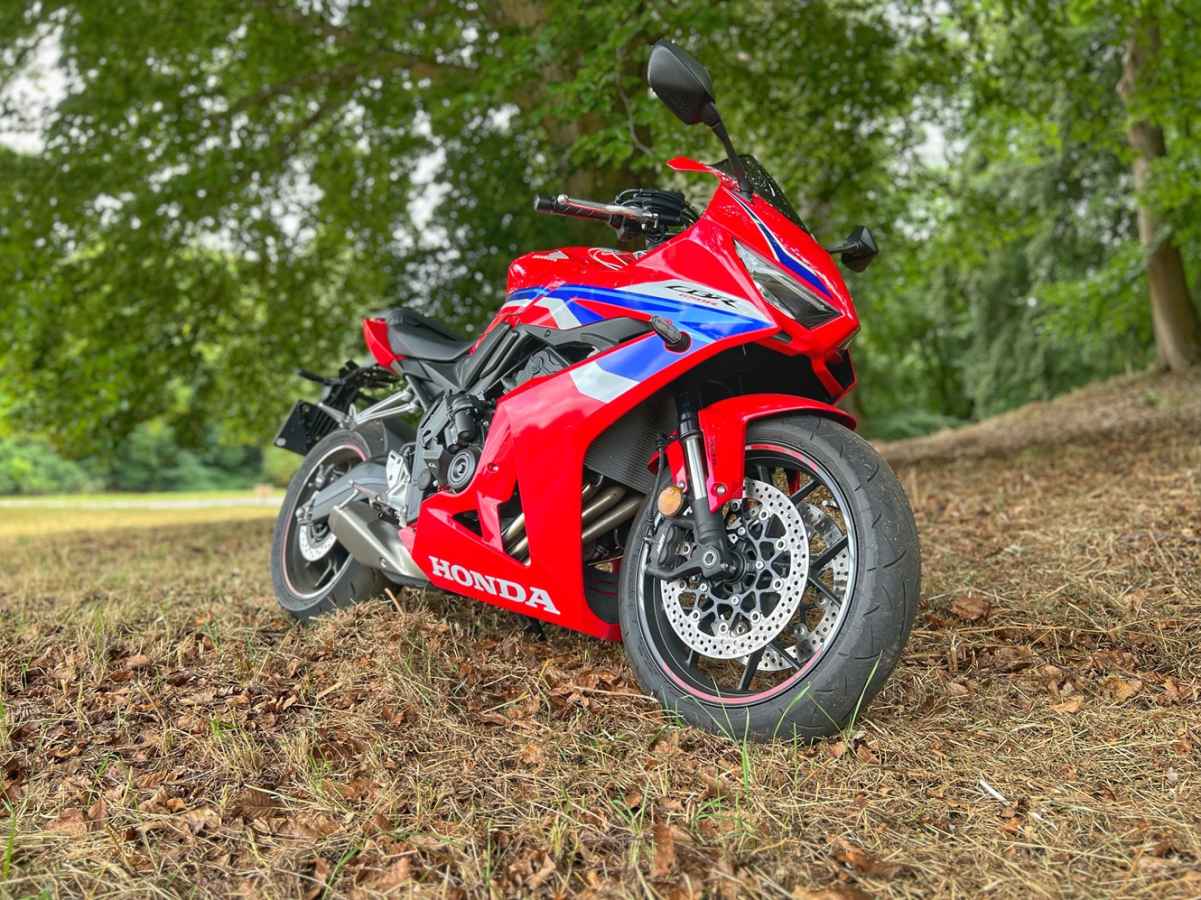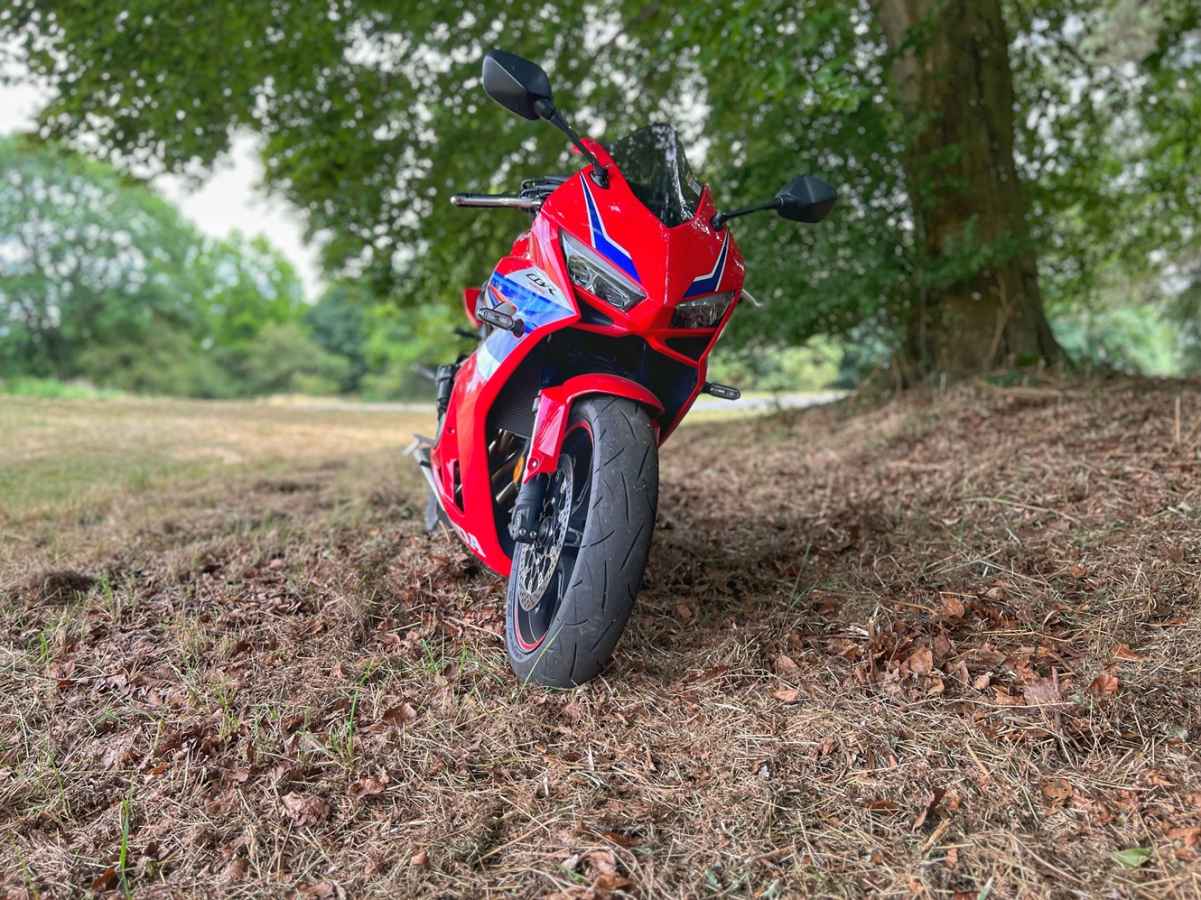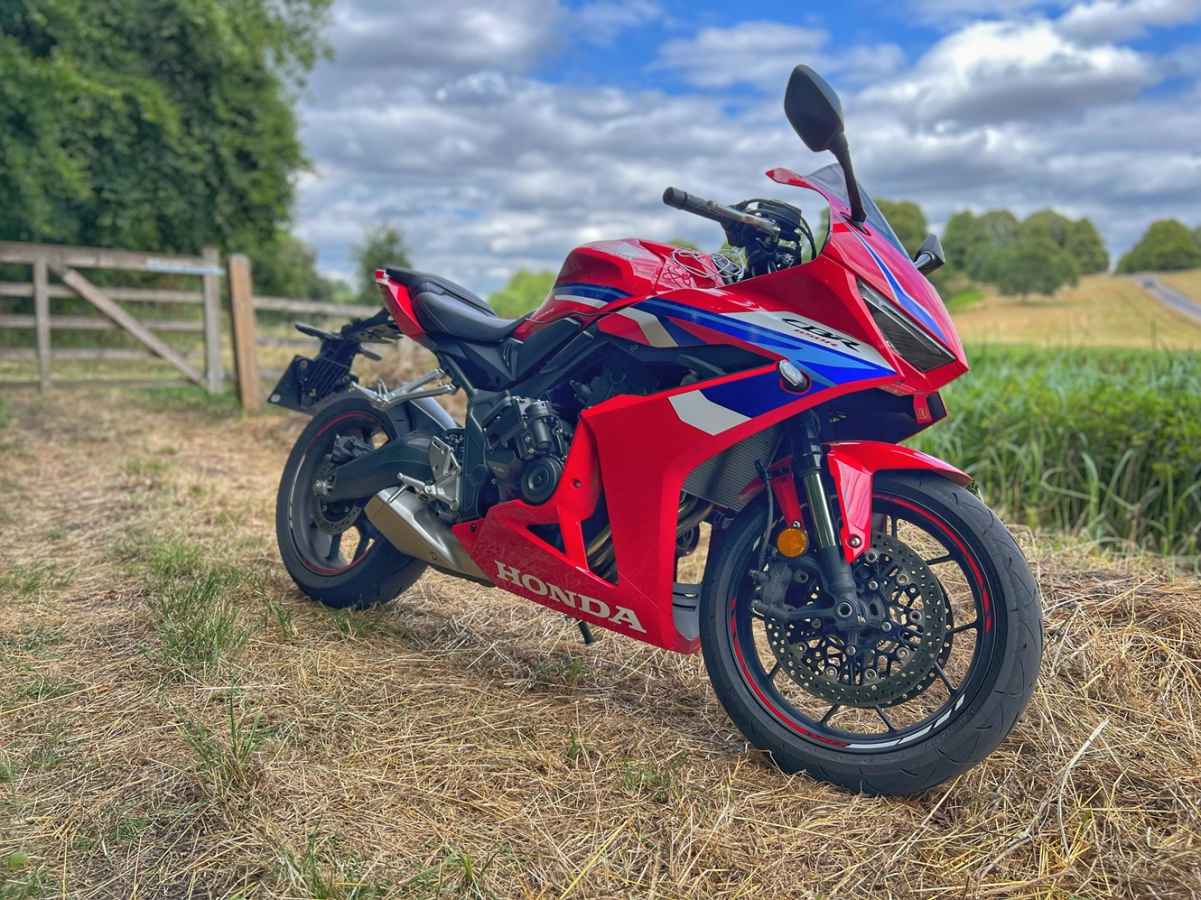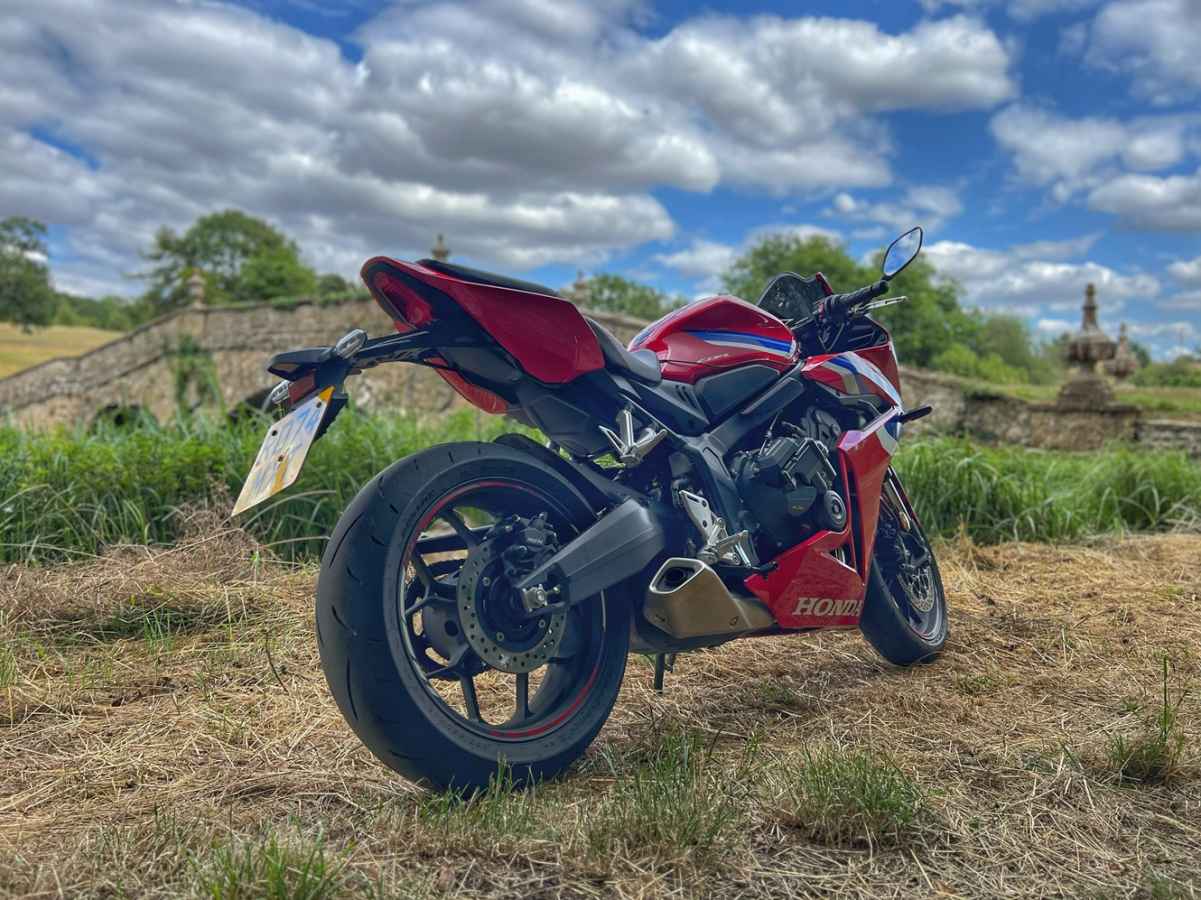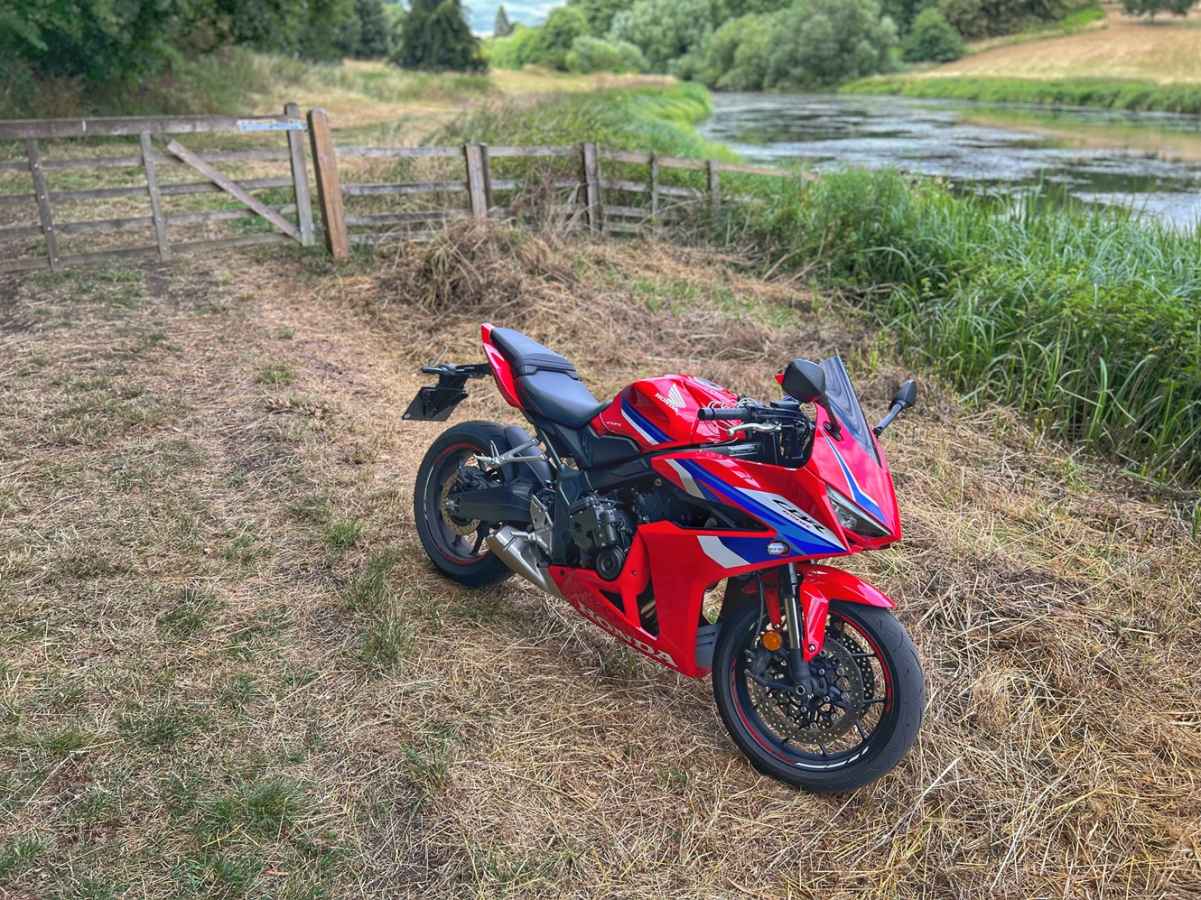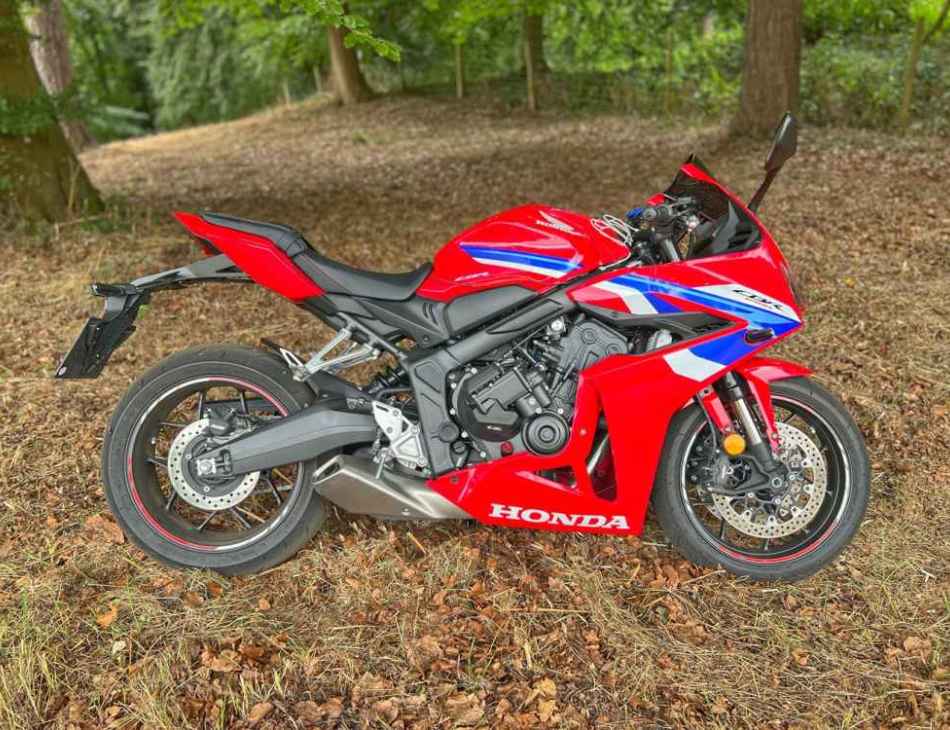The Honda CBR650R - Always Evolving
Honda CBR650R
In an era where technology often overshadows the art of the ride, the Honda CBR650R emerges as a compelling statement of purpose.
Back in the day, a middleweight sportsbike was uncompromising. In recent years, there has been a rebirth of the middleweight market, but the bikes that inhabit this space have now evolved. They have the same or better performance that we were used to, but now have improved ergonomics that make them more practical to live with and more comfortable to ride.
Take the Honda CBR650R, a motorcycle that embodies the exquisite balance between exhilarating performance and sophisticated refinement. For the discerning rider, the CBR650R offers an experience that is both intensely rewarding and effortlessly accessible.
At its heart lies a 649cc inline-four engine that puts out 94 hp (70 kW) at 12,000 rpm and 46.5 lb-ft (63 Nm) at 9,500 rpm. In a world that is increasingly becoming dominated by parallel twins and triples, the CBR650R’s four-cylinder powerplant is a refreshing change, with a raw, unrefined character that provides a sensory symphony. It's a motor of impeccable manners, delivering a smooth, linear surge of power that is as composed in urban traffic as it is thrilling on a winding country road. It likes to rev, but makes power all the way through the rev range, impressive for a 650. It sounds great, with an induction growl that makes the hair on the back of your neck stand up. I can only imagine how good this sounds with an aftermarket exhaust.
Priced at just £8799, the CBR650R follow the tradition, in this sector, of offering a balance between performance and affordability. The suspension is 41mm Showa SFF-BP (Separate Function Fork Big Piston) inverted forks at the front (this separates the damping and spring functions into different fork legs). It’s non-adjustable, pretty standard for this class of motorcycle.
At the rear, there's a monoshock damper that operates directly on a gravity die-cast aluminium swingarm. The rear shock is adjustable for 10-stage spring preload only.
This is standard fare for this class of bike, but unlike some other modern middleweights I’ve ridden, which are limited by their non-adjustable suspension, I found the little Honda’s setup provided great feel and bump absorption. The suspension feels quality. I’m not a small man, and didn’t feel like the suspension was struggling, even 2 up. It’s a difficult engineering challenge for a manufacturer: to manufacture a non-adjustable suspension setup that is cost-effective but works for a wide range of riders. Honda nailed it, though. I added a few clicks of preload, and it was just about perfect for me.
It’s a sharp and responsive bike, agile and great fun. The chassis exudes confidence and manages to strike a balance between being taut and compliant. The result is a bike that feels planted and precise, translating the rider's intentions into fluid movements.
The riding position is an elegant compromise of ergonomic design: aggressive enough for spirited sports riding, yet comfortable enough for a weekend journey. It allows the rider to become an integral part of the machine, not simply an occupant. I did 6 hours in the seat on one Sunday, without complaint. The next, I was out scratching on local roundabouts.
Honda’s CBR650R can be ordered with the optional E-Clutch system.
What is an E-Clutch? In simple terms, it’s an electronically assisted clutch. Think of it as an electronic hand operating your clutch lever for you, if you want it to.
The benefits are great: it acts as a quickshifter, but it's 20% quicker, with the added benefit that it will change gear regardless of the throttle angle. Usually, a quick shifter needs a closed throttle to change down, but this is more intuitive and will change down on part throttle, for example, in traffic.
When you change up with a quick shifter, if you’re riding sedately, it can be a brutal and lumpy procedure. E-Clutch is much smoother on part throttle, like you would yourself. If you are pottering along, on part throttle, and change up, with E-Clutch it feeds the clutch in, like you would yourself, unlike a traditional quickshifter.
For commuting, it's better than a manual as you don't have to use the clutch, but the big difference to this and DCT is the clutch is there and can absolutely be ridden as a normal transmission. At the moment, E-Clutch is cheaper than a quickshifter, so it all adds up to a good combination.
Far from being a technological crutch, it is a sophisticated enhancement that grants the rider a seamless connection with the gearbox. It enables fluid, effortless gear changes without a physical clutch input, yet you can return to the tactile, traditional method at a moment's whim. It is a feature that speaks to a modern sensibility without compromising the purity of the ride.
For example, you can select first from standstill, open the throttle, and the E-Clutch will feed in the clutch for you. However, if you pull the clutch lever in manually, you have taken control, and the bike will operate just like normal. When you come to a stop, you can pull the clutch in as normal, or the E-Clutch will do it for you, as the revs drop. Very clever. It feels odd coming to a stop, and not pulling the clutch in.
The idea with E-Clutch is that it makes riding more accessible, an advantageous uniqueness for Honda and the consumer.
At the moment, E-Clutch is cheaper than a quickshifter, too!
There is no mistaking the CBR650R’s aesthetic, with its sharp, aerodynamic lines inspired by its legendary Fireblade sibling.
It is a machine that looks as fast and poised as it feels.
The Honda CBR650R offers a truly premium riding experience and stands out in this class.
Engine
Engine Type - Liquid-cooled, 4 stroke, 16 valve, DOHC, inline 4
Engine Displacement - 649 cc
Max. Power Output - 94 hp (70 kW) @ 12,000 rpm / 47 hp (35 kW) @ 10,50 rpm (A2)
Max. Torque - 46.5 lb-ft (63 Nm) @ 9,500 rpm / 49 Nm @ 4,500 rpm (A2)
Fuel Consumption - 12 .7 mi /L CO2
Emissions - 112 g/km
Chassis, Dimensions and Weight
Length × Width × Height (mm) - 2,120 × 750 × 1,145
Seat Height (mm) - 810
Wheelbase (mm) - 1,450
Kerb Weight (kg) - 209 (E-Clutch 211)
Wheels, Suspension and Brakes
Brakes (Front/Rear) - 310 mm double disc with 4-piston caliper / 240 mm single disc with single-piston caliper. With 2 channel ABS.
Tyres (Front/Rear) - 120/70 ZR17 M/C / 180/55 ZR17 M/C
Suspension Front Showa - 41 mm SFF-BP USD fork
Suspension Rear - Monoshock damper with 10 stage pre-load adjuster, aluminium cast swingarm, 128 mm axle travel
Price -
CBR650R - £8629
CBR650R E-Clutch - £8799

